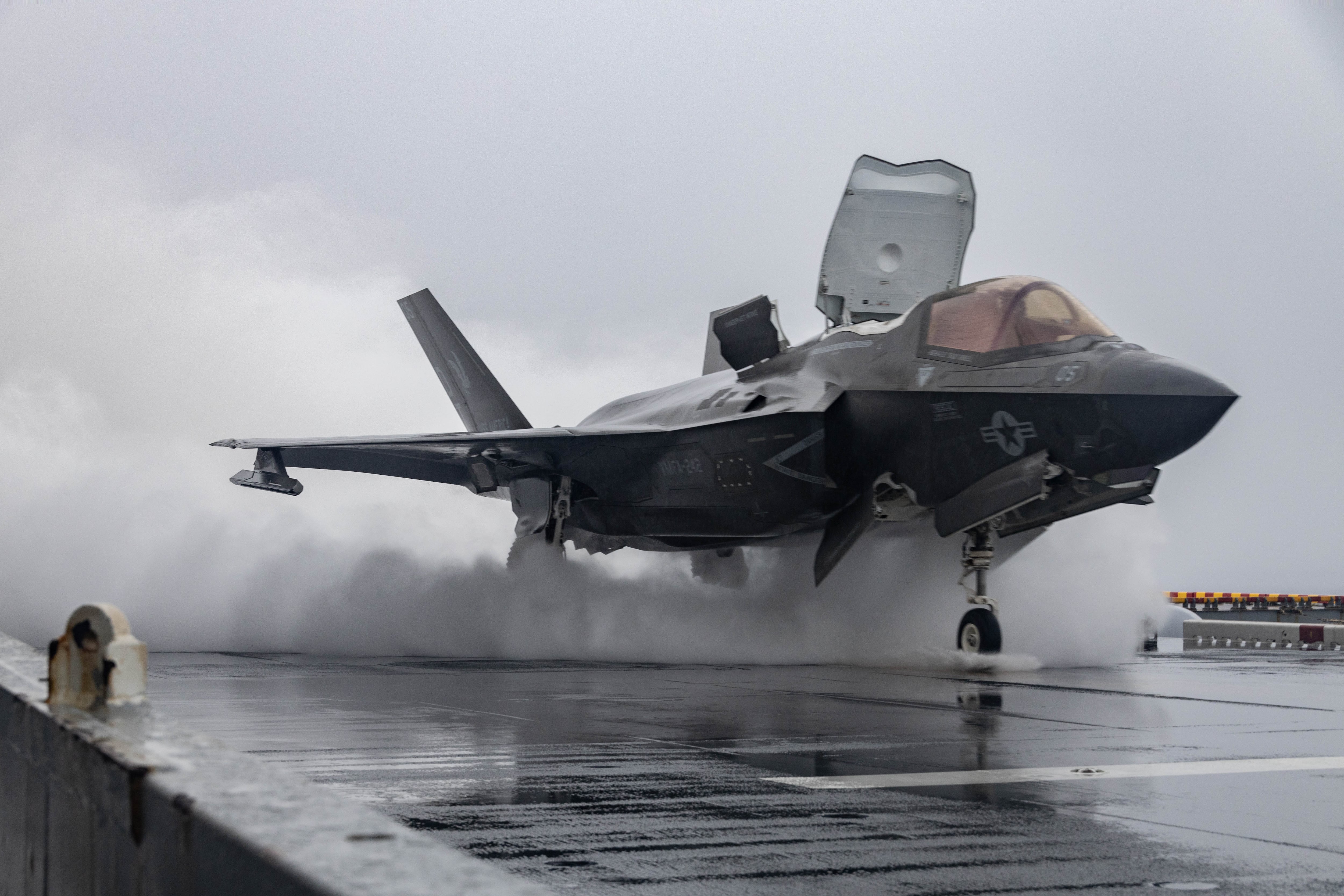The U.S. Marine Corps scaled back its number of MV-22 Ospreys from 24 to 20 on Okinawa, Japan, in 2024 as part of an overhauling effort for the aircraft, according to a Marine Corps spokesperson.
The change was outlined in the 2025 Marine Aviation Plan, released earlier this month, which noted a reduction in tiltrotor squadrons across the service from 12 to 10 authorized Ospreys in support of a force design initiative. Medium Tiltrotor Squadrons 262 and 265 based at Marine Corps Air Station Futenma, Japan, were among those cut.
“Force Design realignment reflects a comprehensive evaluation of the structure and number of Marine Medium Tiltrotor Squadrons to enhance their overall effectiveness and responsiveness,” a Marine Corps spokesperson told Military Times.
The plan has not affected training, combat, or humanitarian missions for the squadrons, the spokesperson said.
RELATED
The Corps’ new aviation plan — the service’s first such plan in three years — includes efforts to target the Osprey’s proprotor gearbox, which Air Force investigators determined was the root cause of a CV-22B Osprey crash in November 2023 off the coast of Japan that that killed eight U.S. airmen. Following the crash, the military grounded Ospreys across the Marine Corps, Navy and Air Force for three months.
“We are pursuing several improvements to the [proprotor gearbox] to enhance aircraft safety and improve component reliability and durability,” the plan reads.
RELATED

Safety issues for Ospreys, which existed long before the November crash, had risen significantly in the years leading up to the tragedy, The Associated Press previously reported.
The top three most serious types of incidents for Ospreys across the Marine Corps, Navy and Air Force rose 46% between 2019 and 2023 while overall safety issues spiked 18% during the same timeframe, according to AP.
The Marine Corps has maintained the aircraft’s safety metrics are not anomalous and align with other aviation safety incident rates.
The new plan includes the Osprey Drive System Safety and Health Instrumentation, or ODSSHI, which will install sensors in the proprotor gearbox to help predict when an aircraft part is in danger of failing so that crews can replace it before that time comes.
The plan also announced a new triple-melt steel component of the proprotor gearbox that the Marine Corps says “will drastically reduce the likelihood of material defects in critical gears and bearings.”
Riley Ceder is a reporter at Military Times, where he covers breaking news, criminal justice, investigations, and cyber. He previously worked as an investigative practicum student at The Washington Post, where he contributed to the Abused by the Badge investigation.
In Other News





Load More
Read the full article here







